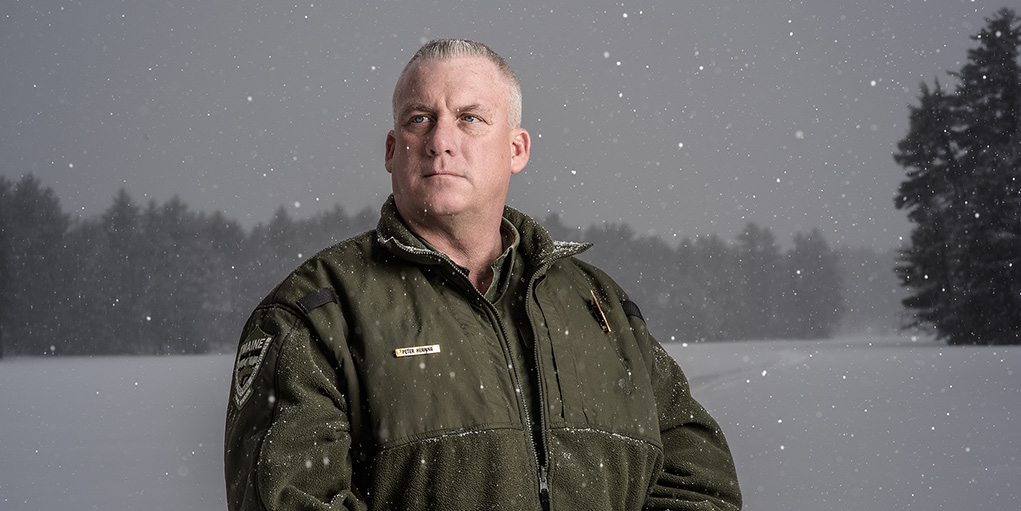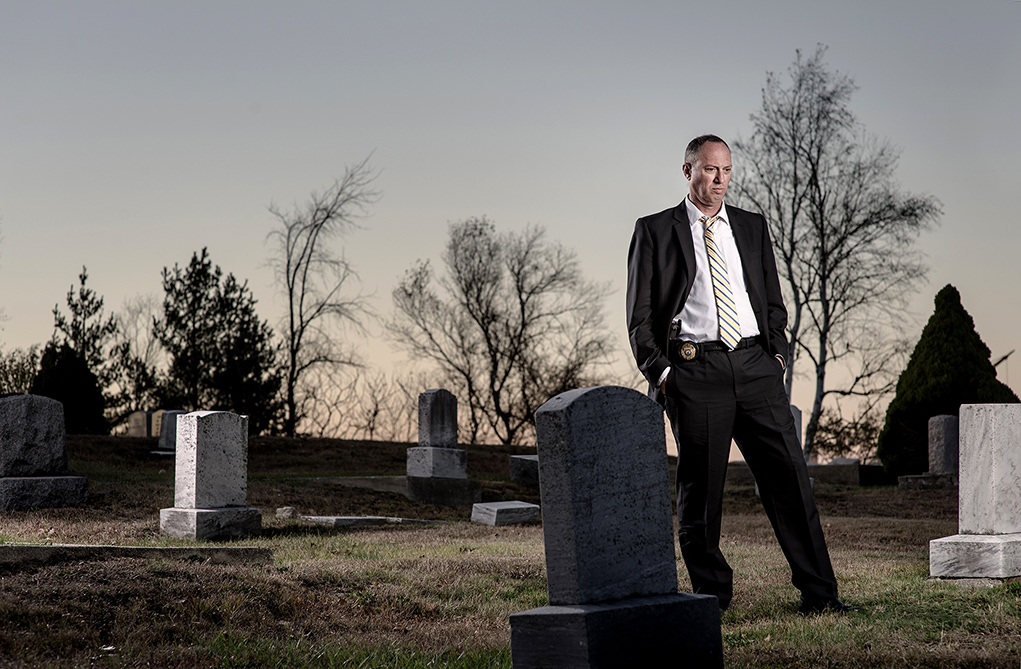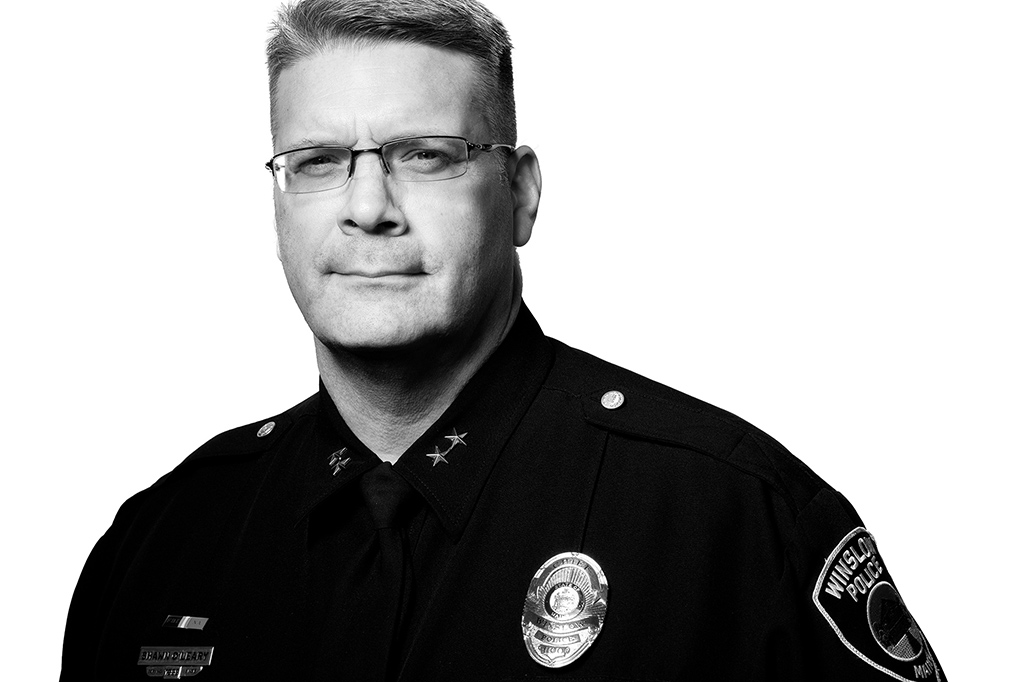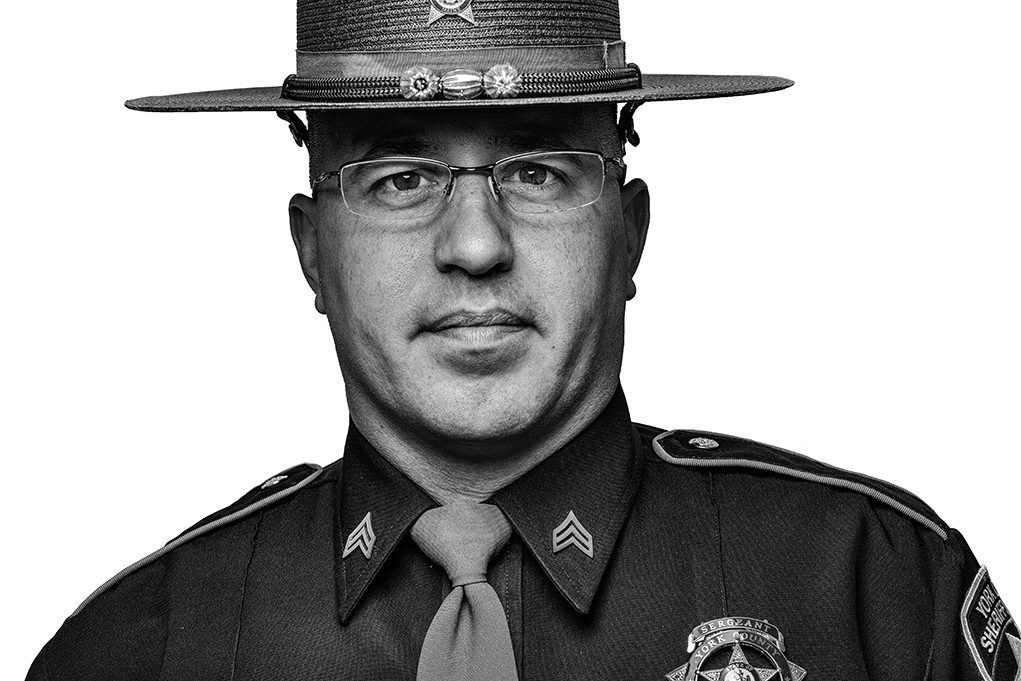
I didn’t initially set out to photograph Maine cops.
As a newspaper photojournalist I spent years covering fatal car accidents, fires and the occasional armed standoff. My interactions with police were polite, professional and purely transactional. It’s fair to say that we viewed each other with a healthy wariness that at times seemed adversarial. My job as I saw it, on the behalf of the public’s right to know, was to make the images that would best tell the story. As far as I could tell at the time, a cop’s job was to thwart my ability to easily do so. To be fair, I imagine that to them I was a pain in the ass at best, an annoying gnat with a press pass. A problem that sometimes made their jobs a lot harder.
We coexisted, at times uneasily. I certainly encountered many officers who treated me fairly. They taught me a lot about professionalism and coolness under pressure. I realized: It takes a certain kind of person to put on a badge, strap a gun to their hip and patrol dark streets. Cops are like you and me, but they aren’t. They belong to a unique tribe of men and women that is often closed to outsiders. Whether seen as heros or opressors the reality is that a badge carries more weight than the metal it’s made of.

Detective Sgt. Steve Webster (ret.), a 30-year veteran of the South Portland police department, discussing an incident where a female prostitute was beaten by her john and left for dead among the gravestones at South Portland’s Forest City Cemetery.
Back in 2004, I was embedded with Army Reserve’s 737th Transportation Company in the Middle East. I found the soliders, wary of my presence at first, relaxed once they got to know me. The stories I wrote were less about what they did and why they did it—why they had made the choice to serve thousands of miles from home, to say goodbye to their families for months or years at a time. I enjoyed getting to know the people they were and no matter my personal thoughts on the war it changed my perspective on soliders—and by extension, cops—forever.
Years later, living in Maine, I met and photographed South Portland Detective Sgt. Steve Webster (now retired) for a book he’d written about a case involving a little girl who he’d promised to find justice for (he did). He handed me a signed copy of his book and I read it. Somewhere in the back of my mind, the idea of making portraits of officers at the exact locations where they had experienced life-changing, career-changing incidents was born.
I met with Webster and the idea gelled further. He encouraged me to expand the idea—to photograph officers from various types of agencies across the geographic span of the state.
“The biggest problem you’ll have,” he said, “is that cops don’t like to talk.” That was an understatement. He agreed to introduce me to Pete Herring, a Maine Warden. Pete introduced me to York County Deputy Steven Thistlewood. And one opened the door for another, as slowly I met and photographed officers from Acton to Ashland.
It remains an incomplete project. There are 146 law enforcement agencies in Maine, employing more than 2500 police officers, according to the US Bureau of Justice Statistics’ 2008 Census of State and Local Law Enforcement Agencies.
I’ve photographed less than a dozen.
I’ve had conversations with them about events that happened months or in many cases years before, but it might have been yesterday. The trauma is still fresh, the wound still raw: moments where time is measured in milliseconds and layered with sound, color and smell. Winslow Chief Shawn O’Leary recalls the moment he fired at a man threatening him with a knife, the slide of his weapon ejecting spent casings and smoke as if in super slow motion; the billowing puffs of the man’s shirt as the rounds impacted. One. Two. Three.

In 1997, O’Leary shot and killed a man who attacked him with a knife. Later he was sued by the man’s family.
“I felt that the experience made me grow even though it was really hard. I think the toughest things that you go through in life make you stronger, and I’m a fighter. I hit some deep low places for some years with my career and with my wife and my kids. But I (wasn’t) going to let the bastard win. I think I also owed it to everybody that was still [in the police department] because in the event that it happened again, I’d be there.”
Sgt. Steven Thistlewood wipes tears from his eyes on the spot where 12 years earlier—almost to the day—he and his partner shot and killed a man who was trying his best to end their lives. It’s the first time he’s revisited the site.
Maine Warden Pete Herring braces himself in a blowing snowstorm on the shores of Lake Arrowhead, where months earlier he had recovered the body of a drowned teenager.
All of these men and women have incredible stories, each tied indelibly to the places in Maine where they happened. Each story, and each officer is as unique and varied as the geography of this state.
It’s my hope that seeing the stories and viewing the images will give a better connection to, and understanding of, the men and women who put their bodies and lives on the line for the public good.
Cops are people, which means there are good ones and bad ones. Lucky and unlucky ones. But read the stories and look at the portraits and ask yourself: if you wore that badge and were in their shoes, what would you have done?
To see the images, please click here.

